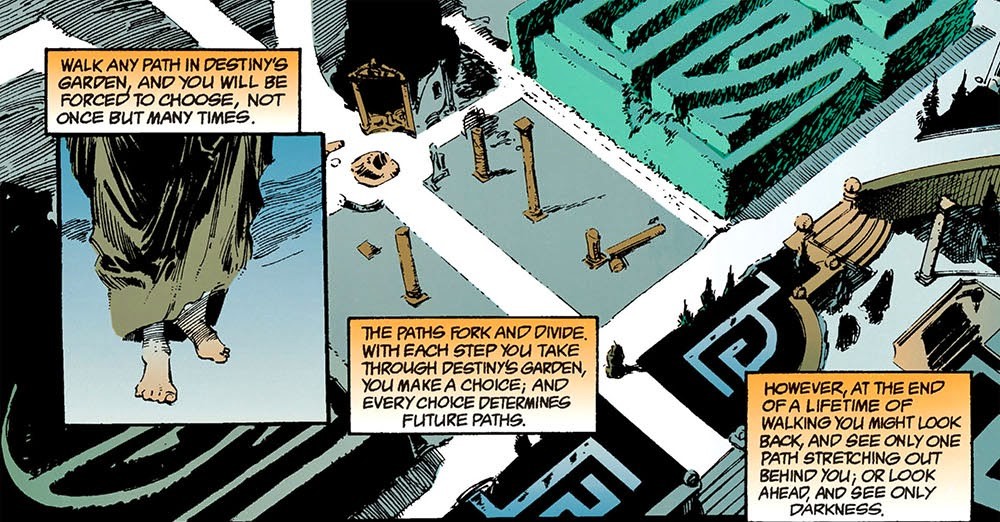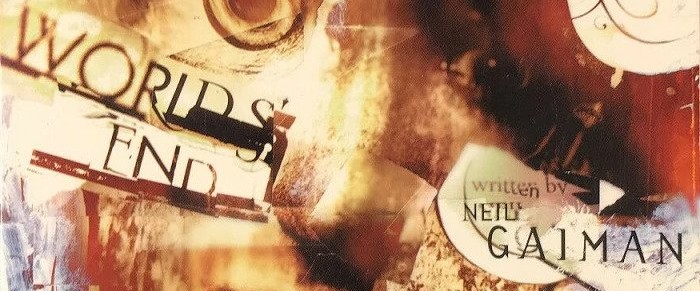The Kindly Ones is dense. It’s the longest volume of The Sandman, collecting 13 issues (plus one small story from Vertigo Jam). It’s confident, it’s powerful, and mostly, it’s just satisfying that all of this has been leading to this point.

I really don’t think Neil Gaiman had that much of a larger plan at the beginning of The Sandman, but he does manage to pull all the various threads together here. Most of the characters playing some kind of significant role in previous volumes reappear here. It’s one of the few volumes that would basically be impossible to understand unless you’ve read the rest of The Sandman. That’s not a complaint, though. While I’m a fan of the idea that you should be able to pick up any issue or collection of a comic and enjoy it on its own, The Kindly Ones strength lies in the journey readers have taken with The Sandman and it’s better for it.
Marc Hempel penciled most of it (except when he didn’t) and the primary pencilers were D’Israeli and Richard Case (except when they weren’t). Other artists who worked on The Kindly Ones were Glyn Dillon, Charles Vess, Dean Ormston and Teddy Kristiansen. For all of the various artists that worked on this volume, the art feels surprisingly consistent, and that does keep The Kindly Ones from feeling too unwieldy. The bold colors by Daniel Vozzo also serve this book well. Their vibrancy keeps the volume from literally being too dark — thematically and otherwise.
The very obvious foreshadowing in both Brief Lives and Worlds’ End point to that this is going to all end badly for Dream (although I’d also argue the entire series pointed to things ending badly for Dream). Dream knows that after he granted his son’s death, the Kindly Ones are going to come after him for spilling family blood. After Lyta’s son, Daniel, is kidnapped by Loki and Puck, she loses her mind and eventually encounters the Furies, who you are only supposed to call the Kindly Ones, who just needed to be asked. Along the way, Cluracan retrieves Nuala from the Dreaming and Thessaly (who is now going by Larissa) brings Lyta under her protection.
And Rose Walker is in here. She was babysitting Daniel when he was kidnapped because everyone in The Sandman eventually knows everyone else (I didn’t mind this as much as I did in A Game of You, though). Her overall story doesn’t directly affect any of the major events in The Kindly Ones, but it has good symmetry and brings her story arc to a conclusion.
But if you’re paying attention, it’s clear that the women other than the Kindly Ones who are drawn into causing Dream’s death are a maiden (Nuala), a mother (Lyta) and a crone (Thessaly) because Gaiman is not at all subtle about his themes. Even Rose, who is, by the way, writing a book about the triple goddess represented in sitcoms, manages to embody all three roles in her own way.
Sadly, for me, the Lucifer parts don’t really add up to much, but it’s still fun seeing him playing piano at an L.A. nightclub with a masked Mazikeen working the door. Delirium’s presence here is minor and almost feels like she was added in because she was a fan favorite. Except for this part:

“Delirium?”
Art by Teddy Kristiansen
Delirium often speaks the truth. Dream is all about his responsibilities but he doesn’t fully understand them.
While most of The Kindly Ones is fairly breathlessly paced, there are some quieter moments that shine. I like part 8 where it follows Dream going about his duties for a week. Rose, as she wanders around England, is also sweetly sad. These are spaces of reprieve from all the tragedy and violence throughout the rest of the volume and keep it from becoming too heavy.
I know Rose’s monologue about hating love is a thing a lot of people relate to and I’m not trying to take that away from them. I have never really connected with it and I still didn’t. I’m not trying to claim I’ve never had my heartbroken, because I have, but I just find her perspective a bit too cynical for me. It reflects where she is in her life, though, so it’s a good character moment.
Also, I have to say that while didn’t really bother me before, the whole “Rose Walker doesn’t age because she gave up her heart” thing doesn’t work. She was 21 and now she’s 25. Most people don’t age too much in that time period, honestly. As much as I know that Rose being pregnant at the end is suppose to represent she’s no longer immortal or whatever, I still have unplanned pregnancies as a plot point in stories.
That’s not the only misstep. Carla being killed by Loki is just another of the dead Black women that die in fires, and Gaiman acknowledging that through The Corinthian doesn’t make it any better.
Nuala’s choice to go strike out on her own is one I’ve always loved and I always wished she had been given more to do throughout The Sandman. I am glad she was able to take control of her own life.
Dream talking with Death right before his death is a beautiful sequence because they both know it’s his only option — but an option he’d prepared for and wanted. In that way, it’s not so much a death as it was a change. And “change” is what The Sandman has always been about (along with stories, of course.)
To me, though, the moment that gets to me the most is when Alex Burgess wakes up from his never-ending nightmares. It’s a satisfying callback to the first issue and reminds me at how far this comic has come.
For all the complaints I’ve had about Gaiman not knowing how to end a story, all the messiness and missed opportunities of The Sandman resolve into a conclusion that works. All the little stories built into this one bigger story and even after all these years, I’m still impressed by that.




